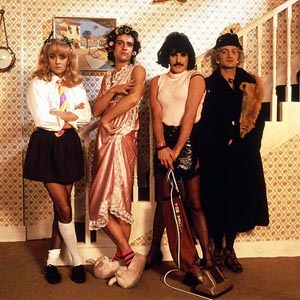History of the Music Press
1950s
NME and Melody Maker were two major magazines in the 50s. Even though Melody Maker had started off in the 1920s as a magazine specifically for jazz and dance band musicians it managed to develop into a mainstream rock into the 50s. Both Magazines capitalised on the music industry by releasing the “charts”. By the 60s the magazines branched off into older target audiences and featured musicians and held award ceremonies. This appealed to a black audience as well when black musicians were featured such as Chuck Berry, Charlie Parker, and Miles Davies.




1970s
The 70s saw the rise of a classic rock, glam rock, prog rock and a nebula of punk bands. Gods like Bowie and the Sex Pistols re-invented music and the way it was written. Magazines still weren’t exactly critical of anyone until they began spending more money on staging and equipment than the actual music itself. It wasn’t until punk was born that magazines started embracing the act of rebellion with songs about politics, philosophy and the status quo or “the man”. NME became indulged in the politics of music and specific bands, therefore narrowing down their target audience and dramatically lost ground to Melody Maker. Melody Maker however, did follow in the direction of other magazines and focused on punk and post-punk but kept their coverage broad to keep a large target audience. Their improved coverage of reggae and soul music grew over time and helped attract more of a black audience. In the late 70s “Smash Hits” was released focusing more on lifestyle of musicians, trivia and became more interactive with their readers.




1980s and 90s
In the 80s punk evolved to become more popular as well as classic rock. For the first year of the decade there was a strike with MM and NME which effected publication and caused writers and designers to come and go. By the mid-80s magazines became more pop orientated, and also focused more on the design of the front cover. New technology had a massive impact on the music industry. The massive rise of MTV popularised the music video and society viewed it as a new art form. An example of this was Green Day’s “Basket Case”, this helped MTV grow and attract a bigger audience. It also grew attention by being quite controversial by not airing Queen’s “I Want to Break Free” because of wearing drag. MTV reached new audiences with the use of television and had a big impact of the music industry, by airing certain bands they could choose who could make it in the industry.
Underground music huge in the 80s but is not well documented and wasn't part of anything mainstream and no underground music signed to a major record label, hence the name, underground.
Underground music huge in the 80s but is not well documented and wasn't part of anything mainstream and no underground music signed to a major record label, hence the name, underground.


Present Day
In modern society music magazines have become less popular due to the fact that every aspect of the media reports on any big news in music as it is very popular with most of their target audience. However, music magazines are still going strong with magazines like Rolling Stone and Billboard, each having a circulation of 1.4 and 1.7 million. Their target audiences are generally young people as it focuses more on the artists themselves but still appeals to most people who like music. Music magazines also tend to cover movies or celebrities if something big is happening at the time as will attract as many people as possible. Most of it is online now though, the use of their websites and social media has changed the way people get the news. The internet has also given websites that are specific to certain genres to gain popularity, for example Ultimate Guitar mainly focuses in on rock and metal therefore being able to reach a specific target audience. All magazines are largely based online now. YouTube has become the main site for music videos, most artists use Vevo through YouTube to reach their audience. An example of this is Miley Cyrus' "Wrecking Ball" which received 19 million views within 24 hours of being uploaded. Magazines such as Rolling Stone have their own YouTube channels to upload videos relevant to their content.




No comments:
Post a Comment